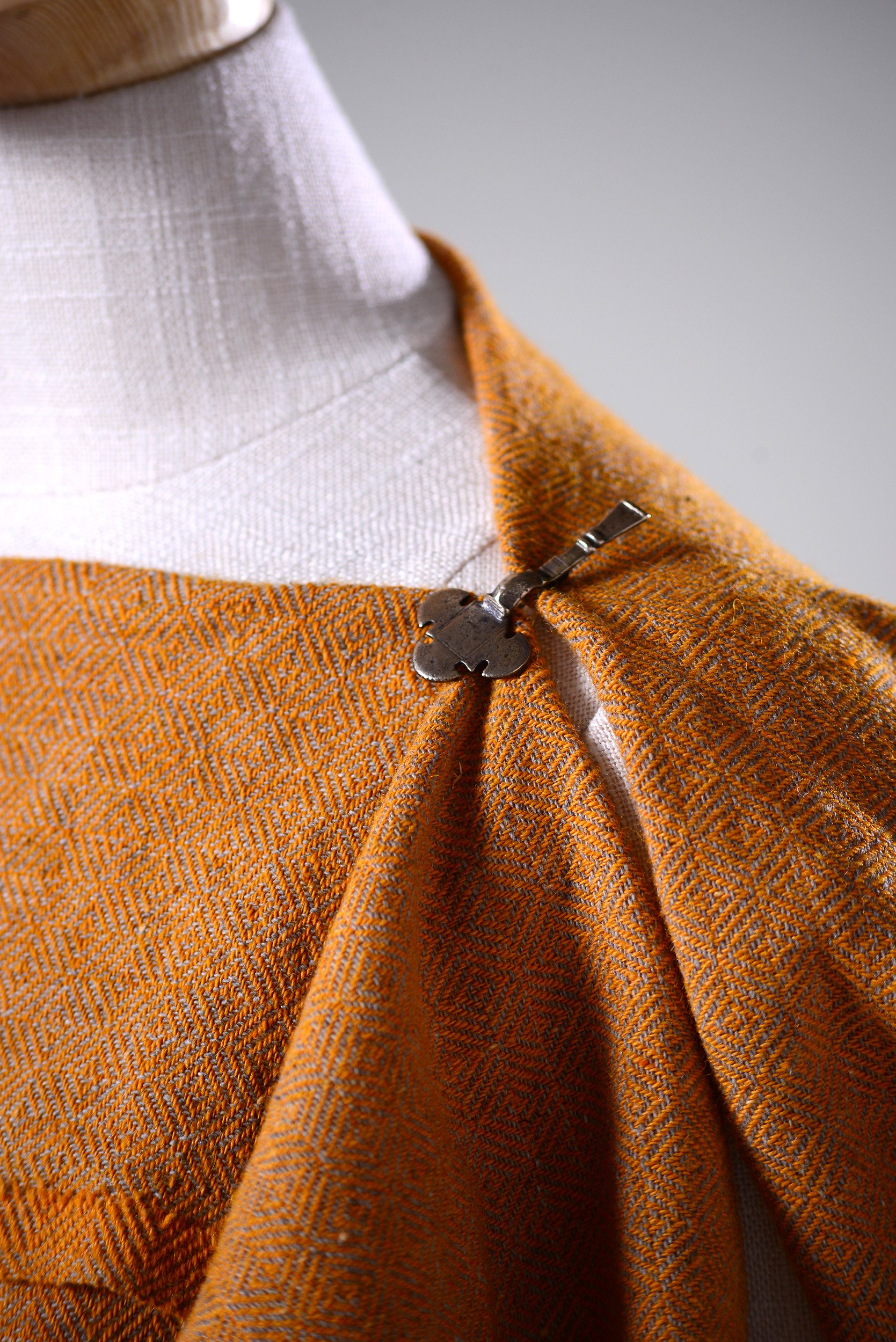Peplos
ANGLO-SAXON
450 - 650 CE
The Anglo-Saxon peplos was a simple, tubular dress worn by women in Early Medieval England during the 5th to 7th Century. We can infer from archaeological evidence that it was typically made of wool and fastened at the shoulders with a pair of brooches. Although we do not have direct evidence for how this garment looked, textile fragments and brooch placement suggest that it was of the same tradition seen both in artwork of Germanic tribes in continental Europe, and the remarkably well preserved Huldremose dress from Jylland. This recreation is sewn in a broken-diamond 2/2 wool twill.
Methods of Draping
Although no Anglo-Saxon peplos garments survive, we can reconstruct the appearance of the peplos gown from the placement of buckles and brooches in graves, continental European textile finds and depictions of Germanic people in artwork - such as those featured on the Column of Marcus Aurelius in Rome. The following are experiments in methods of draping the peplos gown through altering the fold of the garment, belt and brooch placement.
Artwork Details
Medium: 2/2 broken diamond twill wool
Period: Migration Period, Anglo-Saxon England
Date: ca. 450-650 CE
Geography: England
Reference: Dress in Anglo-Saxon England, Gale R. Owen-Crocker













